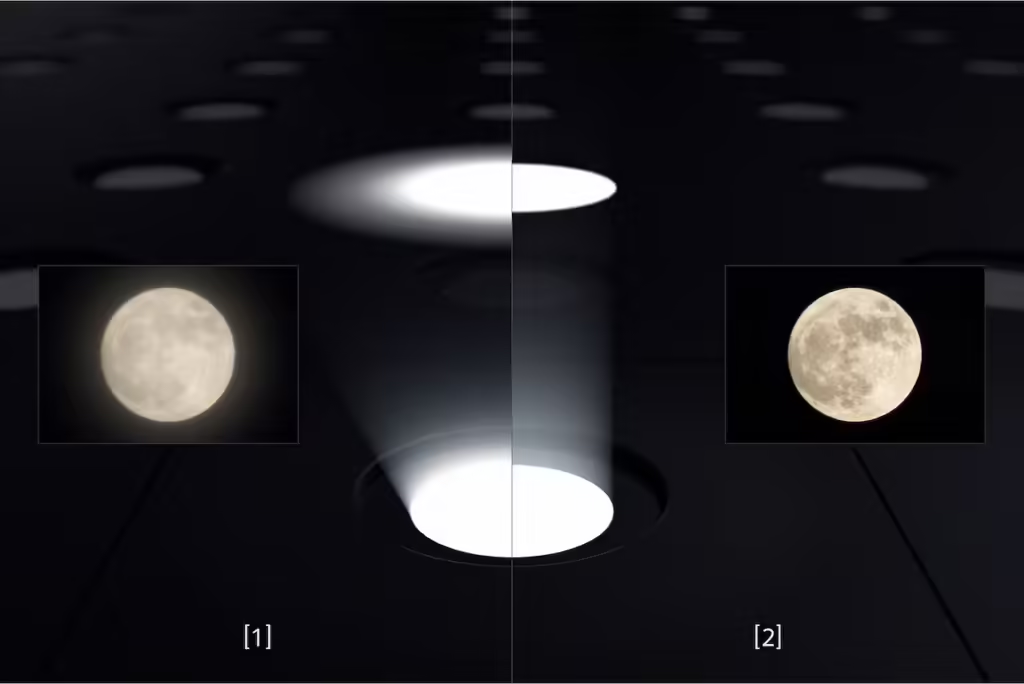If you’ve ever noticed a halo effect around bright objects on your TV screen, especially during dark scenes, you’ve encountered blooming. But what is blooming, and why does it happen more often on LED TVs? In this article, we’ll explain the concept of blooming, its causes, and how different TV technologies handle this issue.
What Is Blooming?
Blooming is a visual artifact that occurs when the light from bright areas of a screen “bleeds” into darker areas. This creates a noticeable halo effect that can distract from the overall viewing experience. This issue is most common in LED TVs due to the way their backlighting system works.

In an LED TV, the backlight is divided into zones that adjust their brightness independently to create contrast. However, when bright and dark elements are adjacent, the light from one zone can spill into another, causing blooming.
Why Does Blooming Happen?
The main reason for blooming lies in the backlight technology of LED TVs:
- Limited Local Dimming Zones: Most LED TVs use local dimming to control brightness, but the zones are often large. This limits precision and leads to light leakage.
- Edge-Lit Designs: In edge-lit LED TVs, light is distributed from the edges of the panel, increasing the chance of blooming compared to full-array LED backlighting.
- High Brightness Levels: LED TVs are designed for high brightness, which can exacerbate blooming in dark scenes.
How Does Blooming Affect Your Viewing Experience?
Blooming reduces the contrast and sharpness of images, making dark scenes less immersive. For example, in a night-time scene where a single streetlamp is illuminated, the halo around the lamp can distract from the intended mood of the scene.
Which TVs Are Most Affected by Blooming?
LED TVs are particularly prone to blooming because they rely on a backlight system to illuminate the screen. Here’s how various LED variants manage this issue:
- Standard LED TVs: Most susceptible to blooming due to fewer dimming zones.
- Mini-LED TVs: Offer better light control thanks to smaller LEDs and more dimming zones, reducing but not eliminating blooming.
- QLED TVs: Use quantum dots for better brightness and color, but they can still experience blooming due to their LED backlights.
How Does OLED Compare?
Unlike LED TVs, OLED displays don’t suffer from blooming. Each pixel in an OLED screen emits its own light, meaning there’s no backlight to cause light bleeding. This gives OLED TVs perfect black levels and exceptional contrast, making them the best choice for dark-scene enthusiasts.
How to Minimize Blooming on Your TV
If you already own an LED TV, here are some tips to reduce blooming:
- Adjust Picture Settings: Lower the brightness and increase contrast to minimize the halo effect.
- Enable Local Dimming: Use this feature if available to enhance contrast and reduce blooming.
- Choose a Mini-LED or an OLED TV: If upgrading, consider a Mini-LED model for improved light control, or an OLED for a blooming-free experience.
Conclusion: What Is Blooming and Why Does It Matter?
Blooming is a common issue in LED TVs that affects picture quality, especially in darker scenes. By understanding what blooming is, you can make an informed choice when buying a TV. While LED TVs remain popular for their brightness and affordability, technologies like Mini-LED and OLED offer solutions to mitigate or eliminate blooming.
Now that you know more about blooming and the technologies behind it, click here to explore the advantages of each display and find the one that best suits your needs.

1 thought on “What Is Blooming? Understanding This Common TV Display Issue”